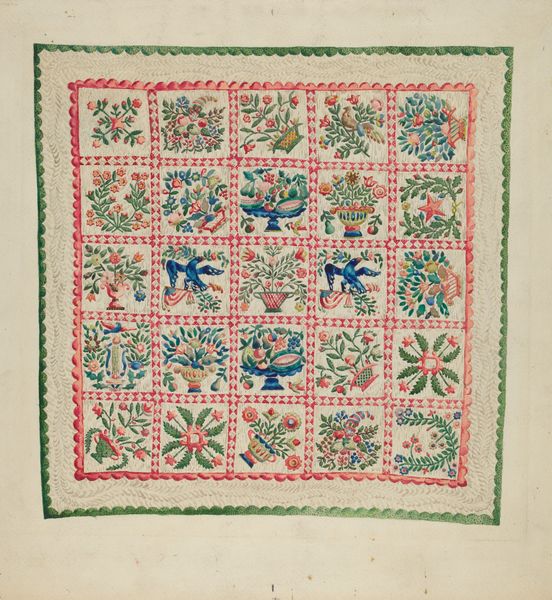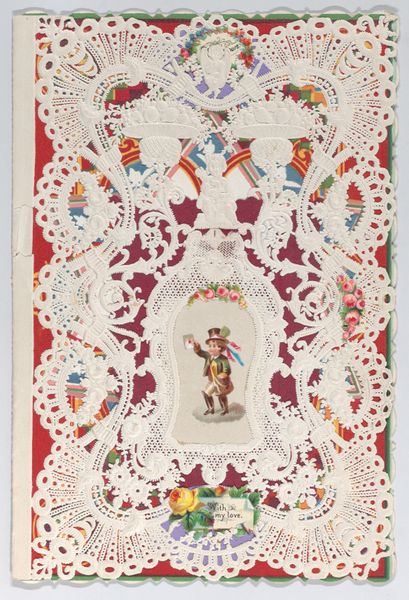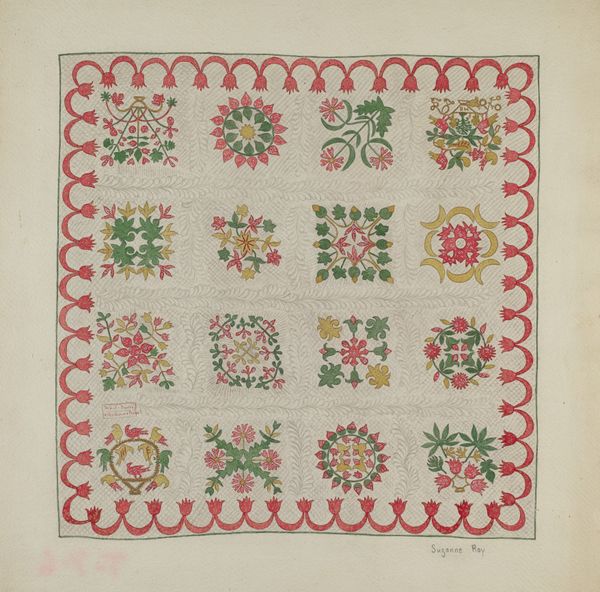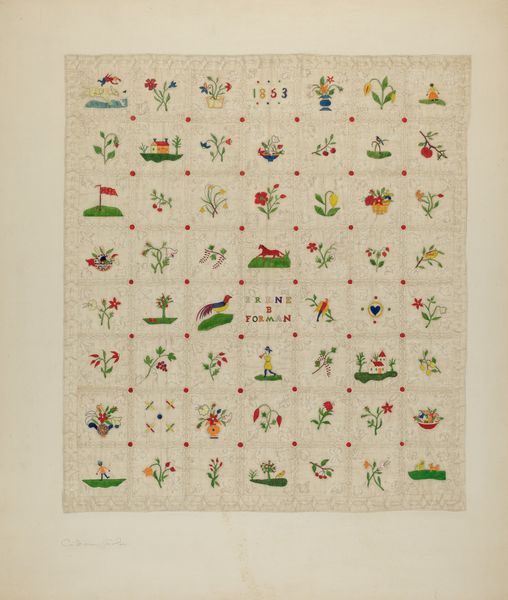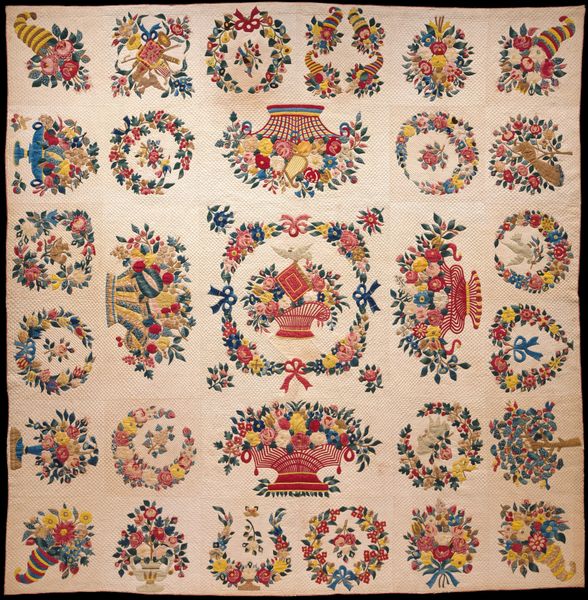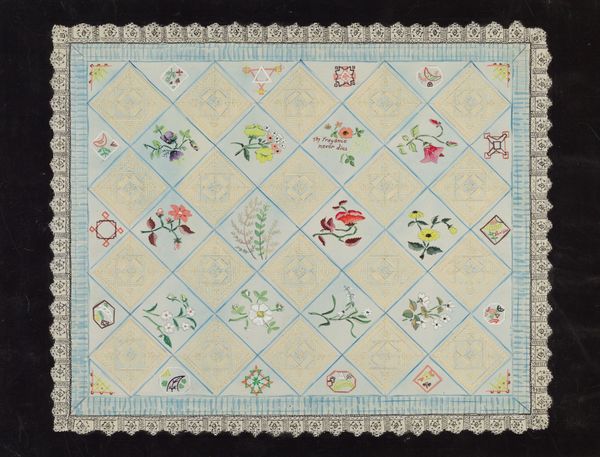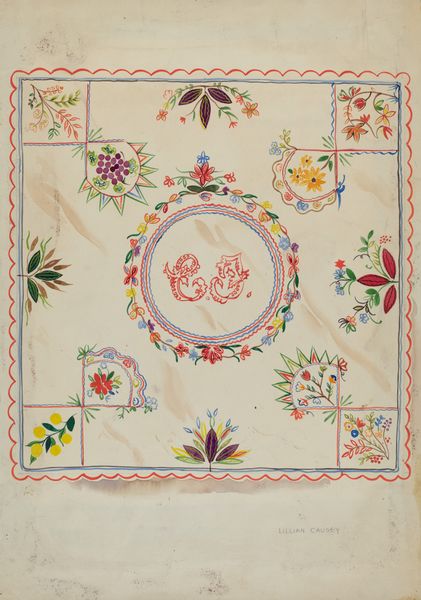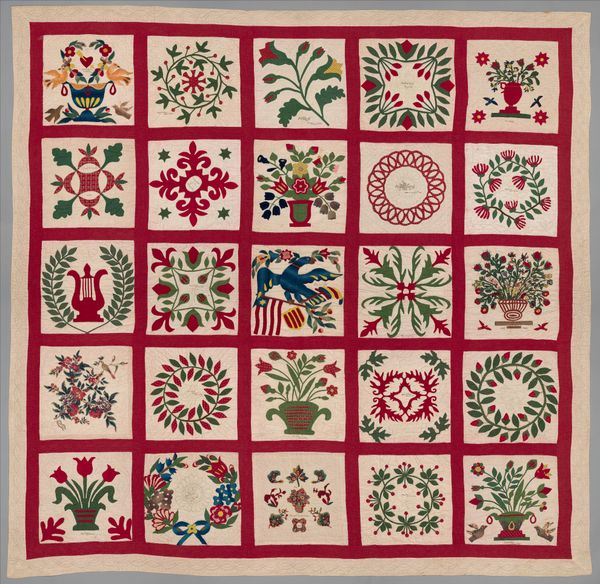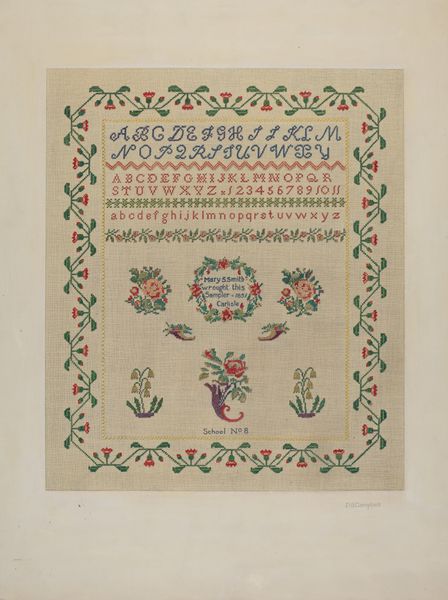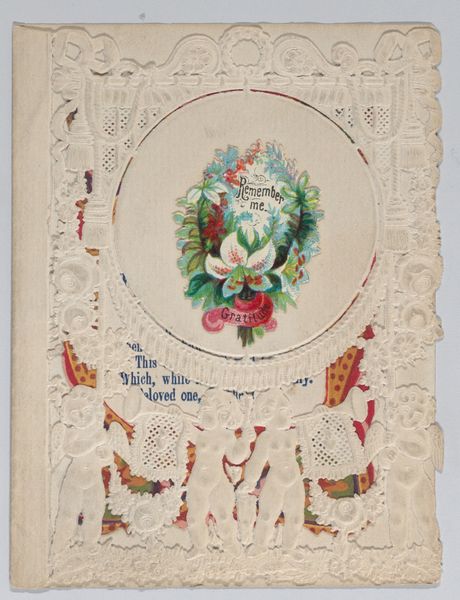
drawing, mixed-media, paper, pencil
#
drawing
#
mixed-media
#
paper
#
folk-art
#
pencil
Dimensions: overall: 35.8 x 24.4 cm (14 1/8 x 9 5/8 in.) Original IAD Object: 90"x90"
Copyright: National Gallery of Art: CC0 1.0
Editor: So, here we have "Quilt" by Lillian Causey, around 1936, made with mixed media including drawing, pencil, and paper. I am struck by how it uses the quilt format, which we usually associate with fabrics and domestic craft, to seemingly play with more traditional "fine art" techniques like drawing. What historical context might have shaped this piece? Curator: That's a sharp observation. Think about the 1930s. The Great Depression forced many artists, like Lillian Causey, to find alternative avenues of artistic expression. "Folk art" and depictions of American heritage became prominent themes supported by government programs. The imagery here - the eagle with the flag, the floral motifs – speaks volumes about patriotism and idealised domesticity during that era. Editor: The squares do feel incredibly nostalgic. What's your read on how institutions have treated crafts like quilting? Curator: Traditionally, these "crafts" were relegated to the domestic sphere, often dismissed by the mainstream art world as "women's work," less significant than painting or sculpture. It’s only relatively recently that museums have begun to re-evaluate these traditions and their societal importance. Editor: So, is this "Quilt," presented as a drawing, a clever commentary on that bias? Curator: It’s possible. Is Causey pointing out how arbitrarily we value different art forms? The drawing mimics the visual language of a quilt, compelling us to reconsider our assumptions about artistry and labor, who gets celebrated, and which cultural products we value. And, note the date: 1936 is post suffrage. Were women expanding their participation in cultural imagery? Editor: That’s a lot to unpack. I had just seen a nice drawing of a quilt. Now I see how it’s challenging our expectations of art, craft, and American identity! Curator: Precisely. It makes you wonder about all the unrecognized creativity that existed beyond the traditional art institutions.
Comments
No comments
Be the first to comment and join the conversation on the ultimate creative platform.
